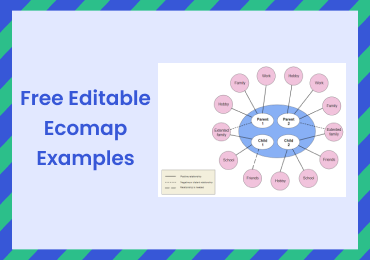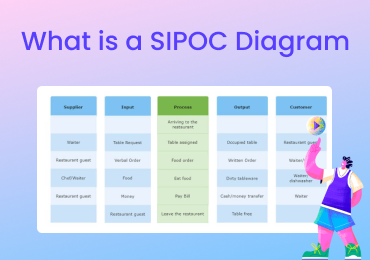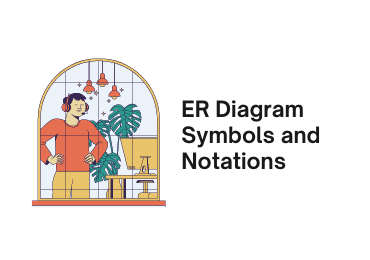What is Supply Chain Diagram
1. What is a Supply Chain Diagram?
A supply chain consists of a stepwise process that an organization takes to convert its raw materials into finished sellable products. The concept can easily be explained with the help of a supply chain diagram that would include details about raw materials, processes, information, and other vital activities. Let’s get to know what is a supply chain and how to come up with its dedicated diagram right here.
Most of the supply chain diagrams are focused on three vital stages:
Supply: It depicts how and from where raw materials are procured and undertaken in the process.
Manufacturing: This is the most vital step in the process that simply converts the obtained raw materials into a final product.
Distribution: This is the final step in which the product reaches out to the end user via a chain of distributors, retailers, and sellers.
Furthermore, the process of movement from suppliers to manufacturers is known as upstream while the second stage in which the end-product is reached to the final customers is called downstream. The concept helps us understand the logistics behind an organization’s manufacturing, distribution, and overall management of its products/services.
2. Key Benefits of a Supply Chain Diagram
Now when you know what is a supply chain diagram, let’s get to know about some of its vital benefits:
- It helps us bridge the communication gap between different parties (like suppliers, manufacturers, and distributors).
- By looking at a supply chain diagram, anyone can understand the overall operations and logistics of an organization.
- After studying a detailed diagram, we can reduce the cost and timing for the manufacturing and distribution of various products.
- It can also be used for troubleshooting an issue in the supply chain process and to improve the overall efficiency of the organization.
- An effective supply chain model ends up delivering high-quality products in less time, optimizing the overall cost and overhead in a company.
3. Common Use Cases of a Supply Chain Diagram
A supply chain diagram can have the following use cases and practical implementations.
- Improved Collaboration: The best part about a detailed diagram is that it helps in better collaboration and communication between different parties in the cycle.
- Quality Control: A supply chain diagram can play a vital role in checking all the important processes and ensuring that the quality of the product is maintained.
- Supply Demand Management: It can also help us understand the overall demand of the product and what measures we should take to meet it in a timely manner.
- Cost Optimization: By understanding the steps involved in the manufacturing or the distribution of the product, we can make the needed changes to optimize the overall costing of the process.
- Risk Mitigation: A detailed diagram is often used in forecasting an upcoming risk in the process and troubleshooting it in advance.
4. How to Create an Supply Chain Diagram?
To draw a supply chain diagram, you can simply take the assistance of a reliable tool like Wondershare EdrawMax Online. It is a freely available online diagramming solution that can help you come up with all kinds of diagrams by simple drag and drop actions. The application can help you come up with 280+ different diagram types, including all sorts of supply chain models.
If you want, you can browse the wide range of templates and user-generated content on EdrawMax to make your job easier. You can access EdrawMax on any platform of your choice and can also export your diagrams in numerous formats. Here’s how you can also draw an informative and visually appealing supply chain diagram with EdrawMax:
You can just go to the official website of EdrawMax Online, log in to your account, and choose to work on any diagram from its home. You can select any existing library set from here or click on the “+” icon to load a blank canvas.
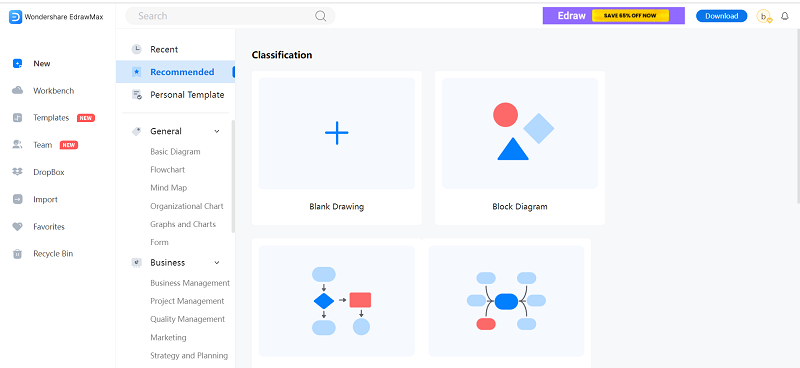
To save your time and resources, you can also go to the “Templates” option from the sidebar. Here, you can look for readily available supply chain diagrams and can directly load any diagram on your EdrawMax dashboard.
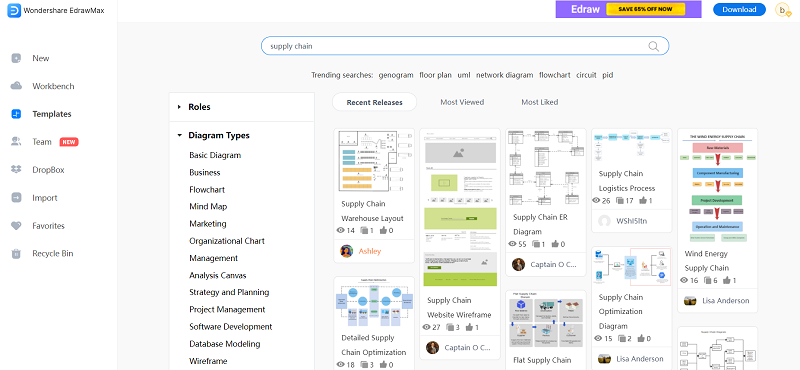
On the left, you can find all kinds of vectors that you can just drag and drop to your canvas to work on any supply chain diagram. You can also go to the “My Library” feature from here and load any existing library of diagramming tools.
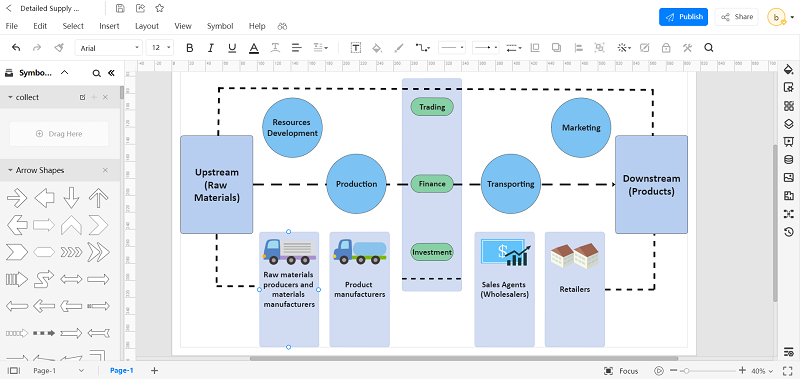
You can further move any entity around, add your text, and make all the needed edits on your EdrawMax canvas.
Afterward, you can also change the overall look and visual appeal of the diagram using the inbuilt features of EdrawMax. For instance, you can just select any entity and go to the right sidebar to change its appearance.
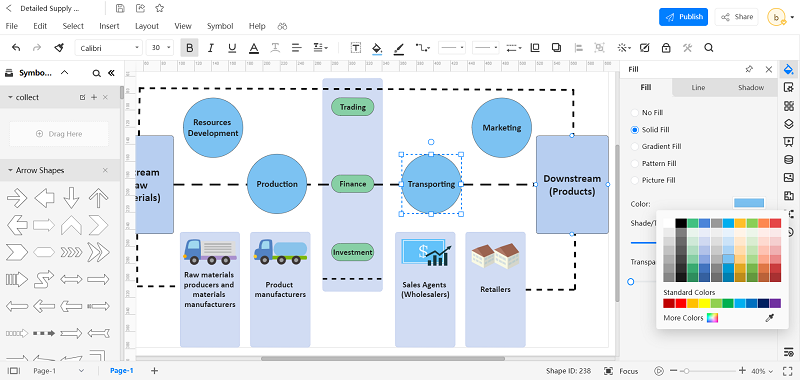
That’s it! Once you are done working on your diagram, you can click on the “Focus” option from the bottom panel to get its preview. You can now go to its File > Export feature to save your diagram in different formats of your choice. EdrawMax gives us the freedom to save our diagrams on the connected cloud or export it to the local storage of your system.
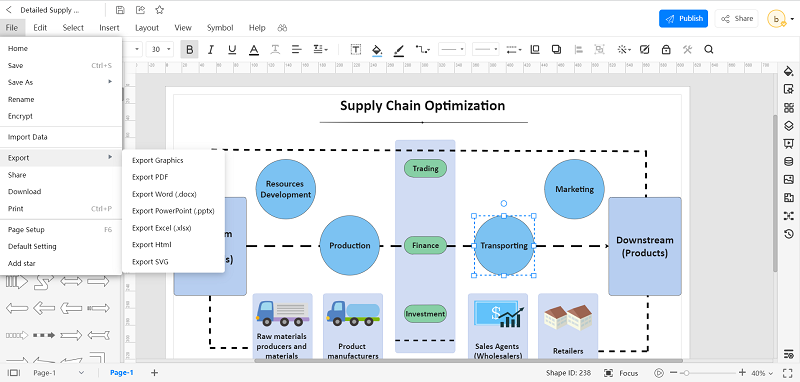
5. Supply Chain Diagram Examples to Explore
To further understand the concept of the energy pyramid, you can explore the following examples:
Example 1: Detailed Supply Chain Optimization
In this example, you can see both the upstream and the downstream operations of the process. The first step in the cycle is regarding the procurement of the raw products and their manufacturing. This includes vital steps like production and resource development. Subsequently, the trading, distribution, and marketing of the products are done in the downstream cycle. This is mostly undertaken by sales agents and retailers.
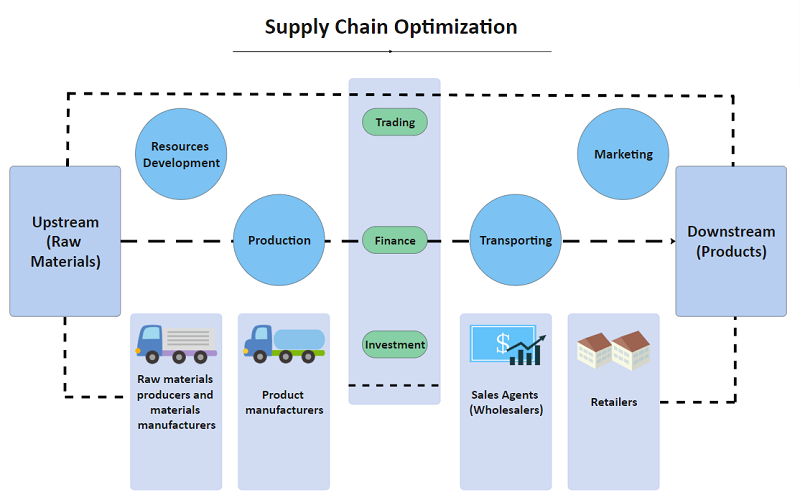
Example 2: Pharmaceutical Supply Chain
This diagram depicts the overall supply chain operations in the pharmaceutical industry. As the manufacturer would produce various medical supplies, they are distributed to pharmacies and retailers. Besides that, wholesalers also play an important role in distributing these medical products. Lastly, the products that are not consumed by patients are passed to a disposal unit.
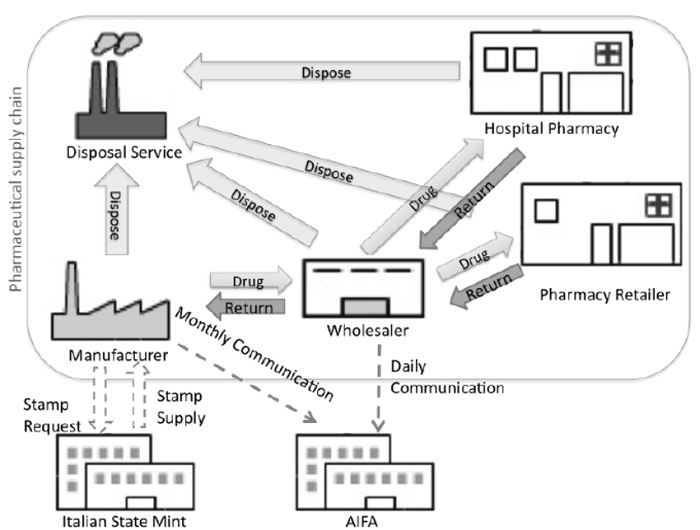
Example 3: Generic Supply Chain
This is a generic example of a supply chain model that deals with the overall operations and logistics of a company. At first, the raw materials are passed through suppliers where they are sent to manufacturers. Once the final product is made, it is sent through distributors and reaches various retailers. In the end, customers can simply buy the product directly from retailers.

6. FAQs about Supply Chain Diagram
What are the 5 basic steps of supply chain management?
Any supply chain model is based on 5 major steps – planning, sourcing of raw materials, manufacturing, distribution of products, and return management (after-sales services).
What is supply chain management?
Supply Chain Management is a dedicated methodology that deals with all the vital steps that are taken in the procurement, production, manufacturing, and distribution of products. It is an overall process that follows end-to-end steps from obtaining the raw materials to distributing the final products to customers.
Where can I find my customer’s customer in a typical supply chain model?
In a B2B ecosystem, you can find your customer’s customer via different marketing channels. For instance, you can dig up their websites or search for feedbacks from their customers to know more about their deliverables.
7. Key Takeaways
After reading this informative guide, you can easily understand what is a supply chain process and how to depict it. Ideally, with the help of a supply chain diagram, we can easily depict all the vital steps in the process and understand how they interact with each other. If you also want to come up with informative supply chain diagrams, then you can take the assistance of EdrawMax Online. It is a resourceful online tool that can help you create hundreds of diagrams without any unwanted hassle.
